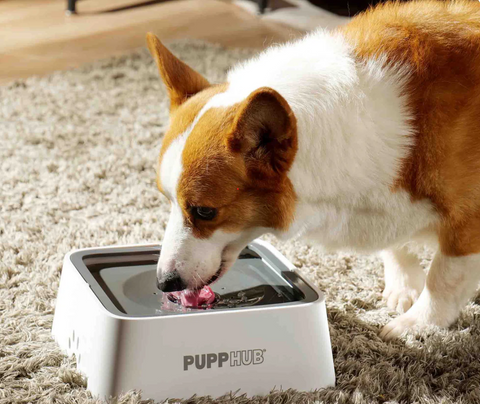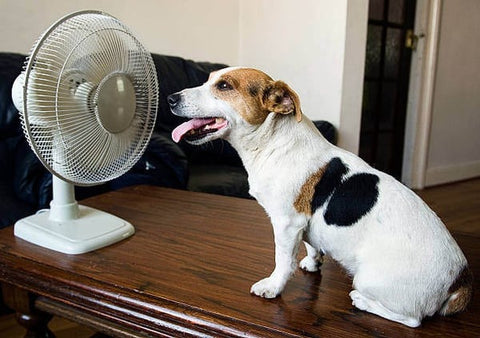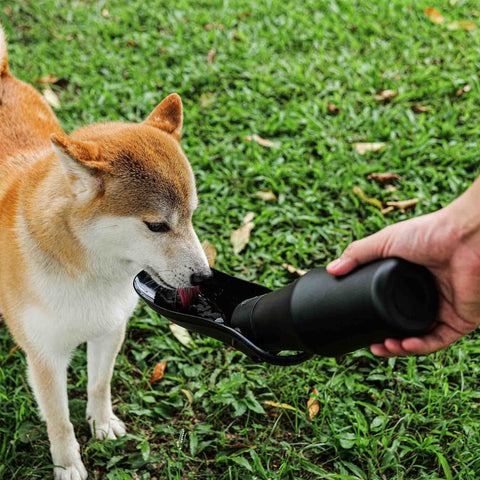Having plenty of fresh water will keep your dogs comfortable as well as enable them to carry out the necessary body functions that are required. One question often being asked is how frequently should you change water for your dogs. In this blog, we will analyze the factors and offer you the answer towards this question, to help ensure your furry friend fit and healthy. Let's move on!
Factors Influencing Hydration Needs
Dogs, just like people, have particular needs for hydration depending on a number of factors:

1. Size and Breed of the Dog
Different breeds have different water needs. Generally speaking, larger breeds have higher water needs compared to small ones. Also, active breeds may need more hydration because they tend to use a lot of energy.
2. Age and Activity Level
Puppies and younger dogs tend to be more active and may need more water compared to older dogs who may be less active. Keep in mind that older dogs may also require varying amounts of water because of health problems associated with aging.
3. Weather Conditions
Seasonal changes can greatly affect your dog's need for water. Dogs drink more in hot seasons to replace the amount of fluids lost through panting, while in the cold season, they might end up drinking less, but it's still important to provide fresh water.
Ideal Frequency for Changing Water
As a rule, you should change your dog's water at least once or even twice every day. Fresh water tempts your dog to drink more, which keeps it always hydrated. However, there are times when demand changes more frequently.
Situational Adjustments
- Hot Weather or Increased Activity Levels: Your dog may drink more on very hot summer days or after an intense play session. In such cases, it might be wise to refresh the water after every few hours to keep it cool and fresh.
- Multiple Dogs Sharing the Same Bowl: Having more than one dog dogs means the water is consumed faster. Monitor the water bowl closely, and change often when the water appears dirty or low.
- Health Conditions That Need More Hydration: Specific health issues can cause your dog to be thirstier, such as diseases related to the kidneys and diabetes. If your dog is facing any health problems, better ask your veterinarian about the special needs of your dog regarding its water intake.
Knowing the Signs of Dehydration in Dogs
Being able to recognize the signs of dehydration can help you take timely action:

1. Dry Gums and Nose
One of the very first signs that your dog is dehydrated involves dry or tacky gums. A wet nose is generally an indicator of being well-hydrated.
2. Lethargy and Decreased Energy
When your dog seems unusually tired tired or not interested to play, it could be due to him not having enough water.
3. Loss of Skin Elasticity
You can test this by gently pinching the skin at the back of your dog's neck. If the skin doesn't return right away to its normal position, your dog may be dehydrated.
4. Rapid Breathing
Due to a lack of fluids in the body, dogs may exhibit rapid breathing and an increased heart rate. This can be a concerning sign and warrants immediate attention.
5. Less Frequent Urination or Darker Colored Urine
Dehydration may lead to less urination, and when it does occur, your dog's urine can be much darker than usual. This may hint at the fact that your dog isn't hydrated.
Best Practices for Providing Fresh Water for Your Dogs
1. Choose the Right Water Bowl
The type of bowl used can make some difference in terms of the changing of water:
- Materials Used: Stainless steel is non-porous and doesn't harbor bacteria, hence ideal for dog bowls. Ceramic bowls are good too but make sure they are lead-free and dishwasher-safe. Plastic will breed bacteria over time and may scratch, which will easily lead to contamination.
- Size Considerations: Select your dog's bowl size based on your dog's size. Larger breeds may want a larger bowl to meet their drinking needs, while smaller breeds could be quite satisfied with a compact option.
2. Clean the Water Bowl
Cleaning your dog's water bowl is just as important as changing the water itself. It is a good idea to wash your dog's water bowl every day. This helps get rid of bacteria that can build up over time and keeps the water tasting fresh. Clean the bowl with warm, soapy water, and avoid the use of harsh chemicals that could be hazardous to your pet. Make sure to rinse well so no soap residue remains, as this can deter your dog from drinking.
3. Place the Bowl in the Right Spot
Place the bowl in some quiet, accessible area away from the high-traffic zones. This will make your dog feel more liable to drink, undisturbed and not stressed by what's going on around them. Keep the water bowl away from your dog's food dishes to avoid spills and contamination.
4. Bring Water When You Go Out
When taking your dog out for walks or traveling, always carry a water bottle and a portable water bowl. This will ensure that your dog is properly hydrated at all times, especially on warm days or right after an exercise session.
5. Ensure Accessible Drinking Water at Home
Have more than one source of water for your dog at home, especially in areas where they tend to be active. Your dog doesn't need to walk very far away from his spot to have water when he finally gets down to playing or when he wakes up from his nap.
6. Monitor Water Intake
A Sudden change in drinking habits can signal health issues. If your dog seems to be drinking considerably more or less than usual, you should seek your veterinarian's advice. You can quantify your dog's water intake by measuring the amount you give him and how much of it disappears over a certain period. Tahere are also specialized pet water bottles on the market that allow you to gauge how much your dog drinks.
Prioritize Fresh Water for Your Dog!
Giving your dogs fresh water is highly important to keep them healthy and happy. Knowing how much water your dog needs and sticking to a schedule to change it ensures that your furry friend stays adequately hydrated. Always observe your dog's behavior and the amount he is drinking. If you notice something different or have any questions, share these with your vet for professional advice. Doing these things will help your dog feel great and stay healthy!

